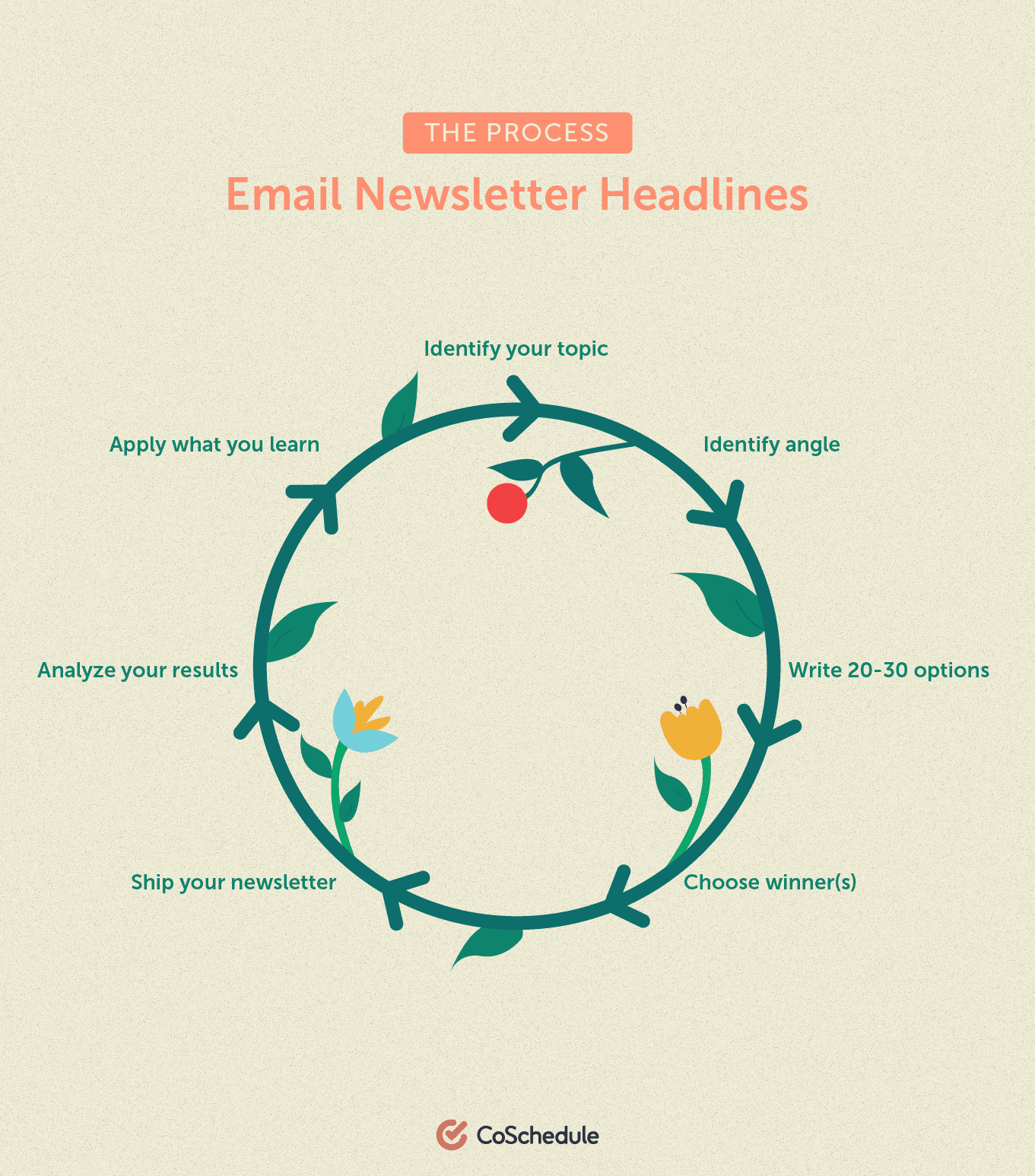15 Email Newsletter Headline Examples That Will Help You Improve Open Rates
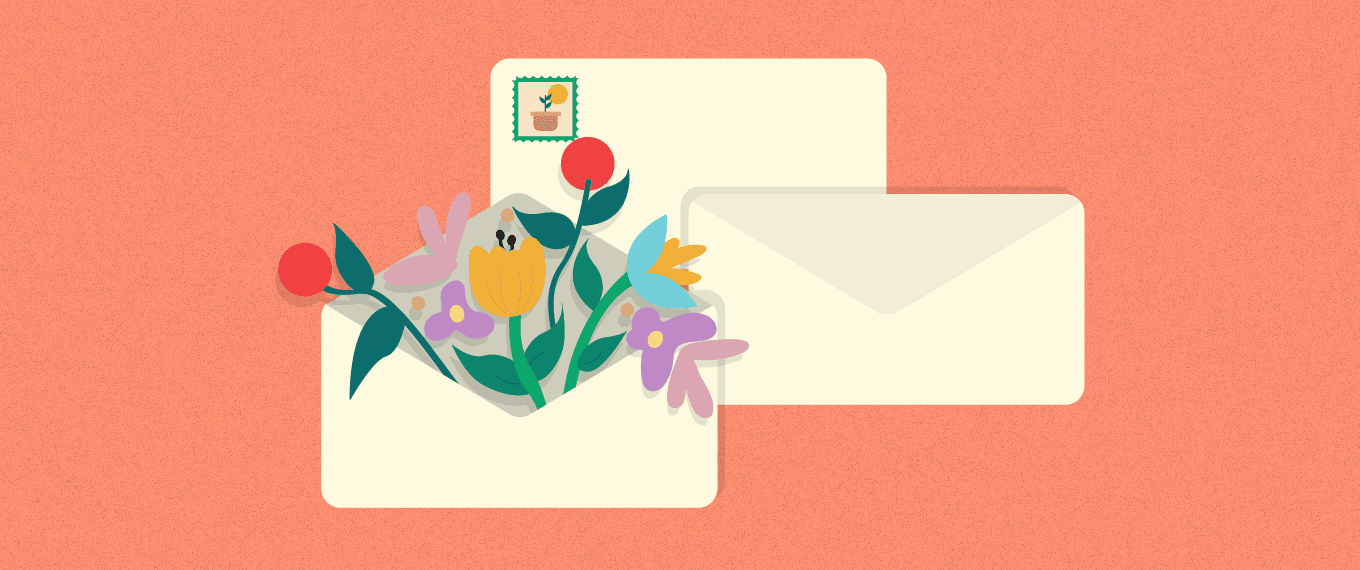 Allow me to put forth a scenario: you spend hours on your newsletter each week — planning, writing, and curating content — but your open and click-through rates are stagnating. People just aren’t clicking on your newsletter.
Does this situation hit a little too close to home? You may be overlooking the most important aspect of writing for marketing: your headlines. Of email recipients, 47% will choose to open or ignore your email based solely on your subject line, which means your newsletter’s headlines and subject lines will make or break your success.
For this reason, we’re going to cover how to write effective newsletter headlines and subject lines that will help you get more out of your email newsletter. Ready, set… well, just wait one second.
Allow me to put forth a scenario: you spend hours on your newsletter each week — planning, writing, and curating content — but your open and click-through rates are stagnating. People just aren’t clicking on your newsletter.
Does this situation hit a little too close to home? You may be overlooking the most important aspect of writing for marketing: your headlines. Of email recipients, 47% will choose to open or ignore your email based solely on your subject line, which means your newsletter’s headlines and subject lines will make or break your success.
For this reason, we’re going to cover how to write effective newsletter headlines and subject lines that will help you get more out of your email newsletter. Ready, set… well, just wait one second.
These 15 newsletter headline examples will help you improve your open rates.
Click To TweetFirst, Snag This Email Marketing Calendar Template
While you’re creating content for your next email newsletter, make sure you plan that content accordingly with this handy-dandy email marketing calendar template.What Are Newsletter Headlines?
The term “newsletter headline” refers to the title of a newsletter or of a piece of content being promoted within a newsletter. These headlines appear as the newsletter’s subject line and within the body of the email, and they serve the purpose of grabbing attention and inspiring curiosity from the newsletter’s audience. This post will guide you through writing newsletter headlines that also work well as subject lines. We will cover some aspects of strong newsletter headlines, list 15 examples of newsletter headlines that inspire curiosity, and then walk you through the process of writing newsletter headlines that convert.Elements of Quality Newsletter Headlines
Now it’s time to get into what aspects of a newsletter’s headline make it quality — and in this case, quality means clickable.Quality newsletter headlines = clickable headlines.
Click To TweetIt’s Concise
I’m sure you’ve heard this advice a million times before, but bear with me because it deserves being repeated. When you’re writing a headline for your newsletter, it is important that you don’t try to include too much information. Your goal should be to incorporate just enough information to stimulate your readers and make them want to click on your content to learn more. Remember, your title is supposed to be an attention-grabber for your readers; whom you have to assume have short attention spans. For this reason — and because of the constraints on how long subject lines can be — you should try to make sure that your headline is no longer than a few, carefully-chosen words, and 17–24 characters seems to be the optimum length for convertible subject lines.
It’s Attention-Grabbing
If your headline isn’t pulling in readers and at least making them consider exploring further, you’re doing it wrong. As I said before, you have to approach your headline with the assumption that your readers have short attention spans, so your hook needs to be catchy if you want people to spend time looking at your newsletter. A great way to do this is by including words and terms that are proven to grab peoples’ attention, which is why I’ve included the list below of 100+ words that increase newsletter opens. See if you can incorporate some of these words into your next newsletter headline, and then compare your open rates. I’m willing to bet that including these words will increase your traffic right off the bat.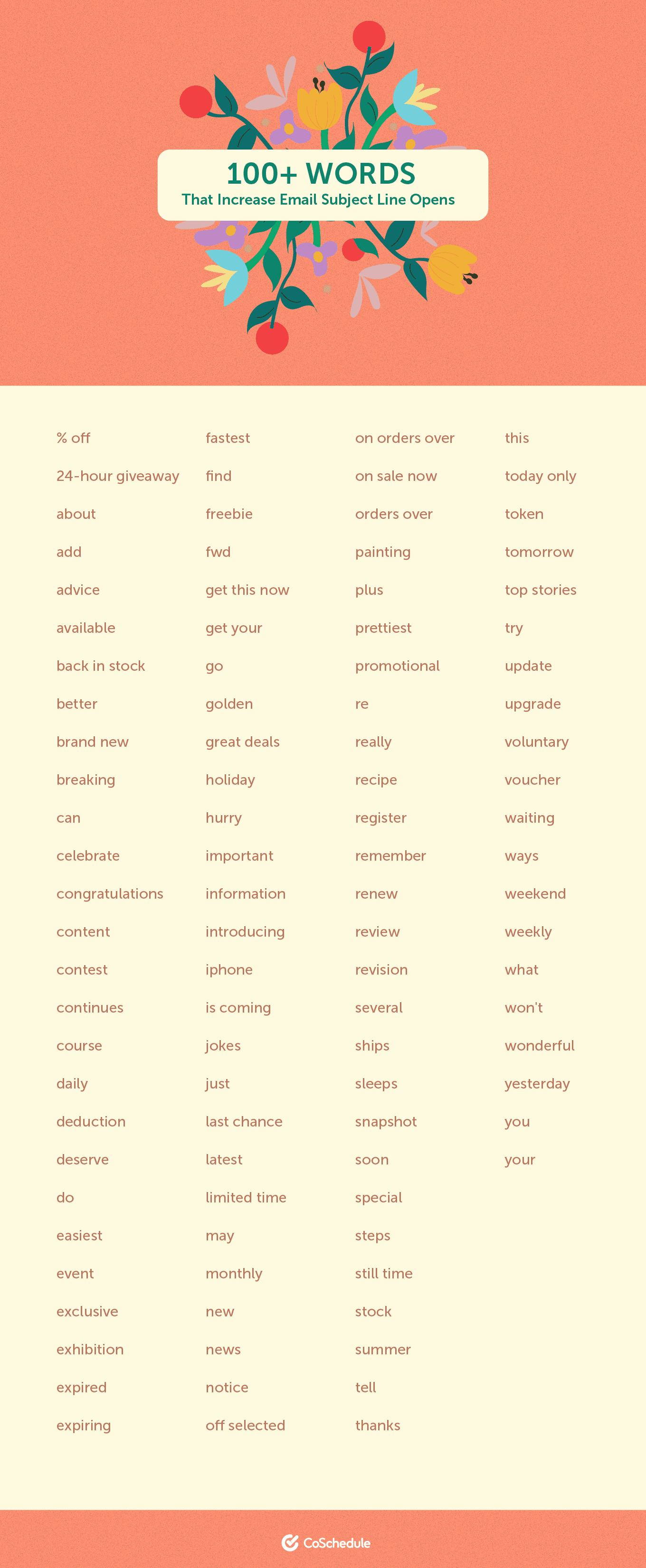
It’s Readable in Most Email Clients
Something that is sometimes overlooked when writing headlines for email newsletters is the mobile element. If a customer is seeing your headline on their phone in the subject line area of their inbox, it may not appear as it was intended to when you viewed it on your computer. That’s why it helps to check the readability of all your subject lines before you ship. This subject line is just the right length for sending to both mobile and desktop users, and — as you can see — it didn’t get cut off within the mobile email app on which it was received.
It is recommended that you keep subject lines to around 3–5 words and under thirty characters to ensure that they can be read across all platforms and devices. This is just a good practice, as it gives you peace of mind knowing your emails won’t alienate any users who are on different platforms.
This subject line is just the right length for sending to both mobile and desktop users, and — as you can see — it didn’t get cut off within the mobile email app on which it was received.
It is recommended that you keep subject lines to around 3–5 words and under thirty characters to ensure that they can be read across all platforms and devices. This is just a good practice, as it gives you peace of mind knowing your emails won’t alienate any users who are on different platforms.
It’s Personal
I’m sure you’ve seen plenty of emails with your name in them, but don’t overlook this strategy. People love things that are about them, so seeing their name in the headline of your email will make them far more likely to click. In fact, personalized subject lines are 22.2% more likely to be opened. Another way to do this is to segment your email list and send out targeted content to each segment.It Invokes Curiosity
A great way to increase your open rates is to craft headlines that invoke a sense of curiosity in your readers. This is easier said than done, but a great way to go about it is to create what’s called a curiosity gap. A curiosity gap is made by writing your headline to set up a sense of the unknown, pushing your readers to go through your content to learn something new. For example, you may write a headline like “The 25 Best Ways to Maximize Your Productivity”. This will draw readers in who are interested in getting more done and want to know what you have to say on the topic.It’s Relevant to Your Audience
If your headline can relate to a relevant topic, you have a much better chance of catching the attention of your readers. For example, at the beginning of each new year, CoSchedule’s newsletter will feature some calendar/planning content, with subject lines like “Plan an Entire Year of Content Ahead of Time”. This is relevant to people who are gearing up for a new year, and, thus, these emails usually see higher-than-usual open rates.It Relates to Your Content
Remember, even the best headline won’t make up for content that is lacking. Include great content within your newsletter and make your subject line and headline a reflection of that, and you should be in good shape.It Provides Value
There should be a clear value proposition within your headline that lets your readers know what benefit they will get from reading your newsletter. This can be anything from increasing revenue to making better content, just make sure it’s clear what your reader will get from your content.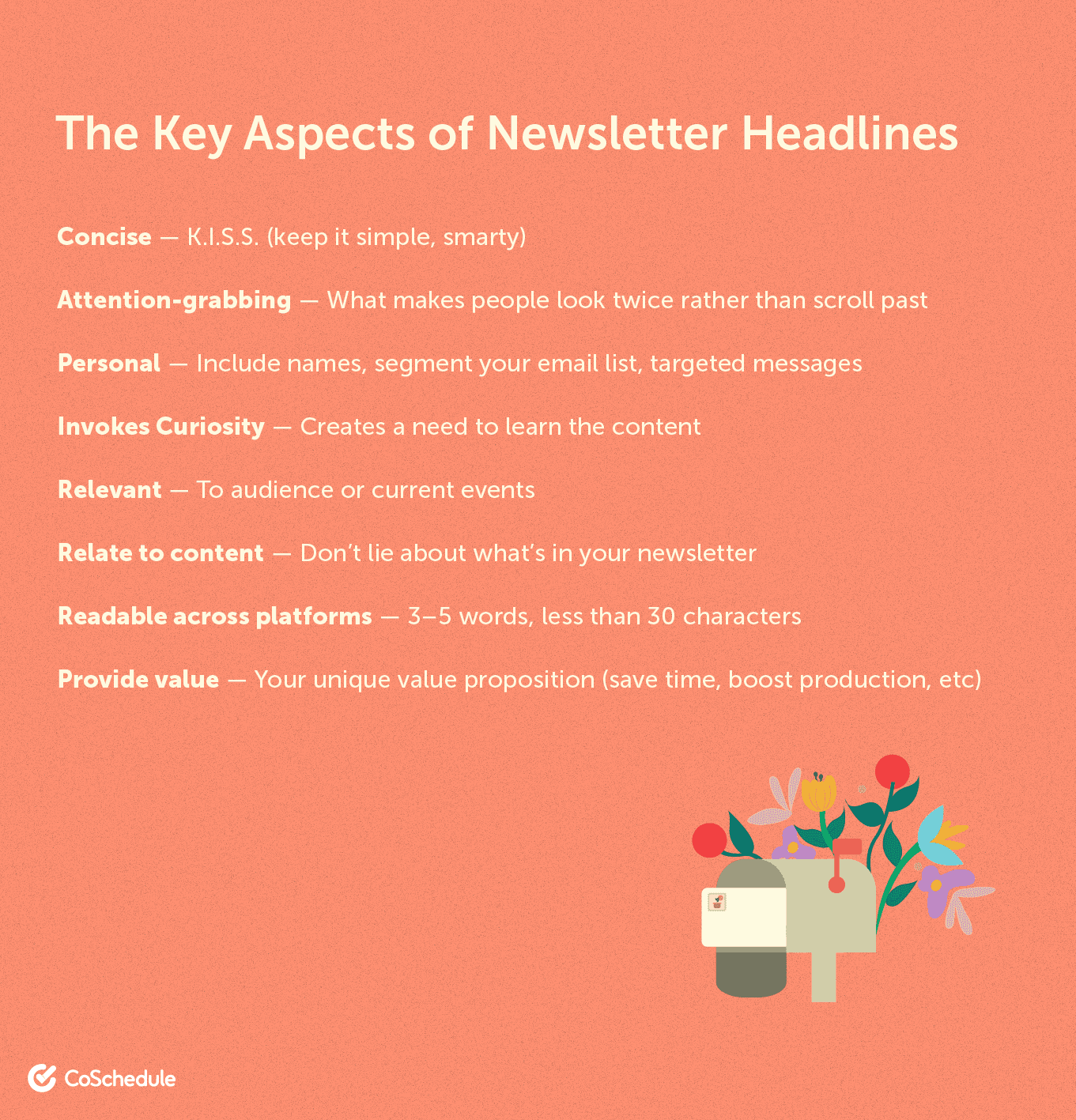
15 Examples of Great Newsletter Headlines
Now, let’s look at 15 newsletter headlines that do these things well and are likely to get more clicks than most run-of-the-mill headlines.1. Could this rocket go to Venus?
This headline from the Inverse Daily newsletter does a great job of grabbing attention, and it’s also quite interesting and relevant to the publication’s content, scientific articles, and findings. The subject line grabs readers’ attention with an emoji right off the bat, and the question “Could this rocket go to Venus?” is sure to induce curiosity in those who receive this email. As this headline shows, emojis are good attention grabbers as long as they relate to the subject. Since most email marketers don’t use emojis in their subject lines, using them can help you stand out from the competition as long as you use them responsibly.2. A ransomware gang is demanding $50 million from Acer
 This headline comes from Engadget’s newsletter, The Morning After, which explores news from the tech world. This subject line relates strongly to their content, as it introduces information from an article within the newsletter, and it does a great job of grabbing the attention of Engadget’s audience. In addition, it has been shown that including numbers in subject lines makes people more likely to click, so including the “$50 million” makes this headline even better.
This headline comes from Engadget’s newsletter, The Morning After, which explores news from the tech world. This subject line relates strongly to their content, as it introduces information from an article within the newsletter, and it does a great job of grabbing the attention of Engadget’s audience. In addition, it has been shown that including numbers in subject lines makes people more likely to click, so including the “$50 million” makes this headline even better.
3. Build a Garden To Haul a Big Harvest From a Small Plot
 Popular Mechanics has a solid presence in the content marketing world, and their newsletter is no exception. What this subject line does exceptionally well is that it presents a clear benefit to the reader, letting them know that clicking on this email will give them new and helpful information related to their interests.
This headline is also in title case, which does a better job of grabbing peoples’ attention than sentence case.
Popular Mechanics has a solid presence in the content marketing world, and their newsletter is no exception. What this subject line does exceptionally well is that it presents a clear benefit to the reader, letting them know that clicking on this email will give them new and helpful information related to their interests.
This headline is also in title case, which does a better job of grabbing peoples’ attention than sentence case.
4. The Mighty Ducks Are Back!
 This headline from The Ringer, a sports newsletter, is notable because of its relevance to current events, mainly the upcoming release of the new Mighty Ducks movie. The Ringer, in this case, makes the assumption that its audience knows about Mighty Ducks — a pretty good bet for a sports publication.
The lesson here is to find content relevant to your audience in the present, include it within your newsletter, and then highlight it in your subject line.
This headline from The Ringer, a sports newsletter, is notable because of its relevance to current events, mainly the upcoming release of the new Mighty Ducks movie. The Ringer, in this case, makes the assumption that its audience knows about Mighty Ducks — a pretty good bet for a sports publication.
The lesson here is to find content relevant to your audience in the present, include it within your newsletter, and then highlight it in your subject line.
5. The Almost-Unbelievable True Story of the Sidewinder Missile
 This headline from the Popular Mechanics newsletter works because it presents a benefit to readers — learning this true story — and creates a curiosity gap by stating that the story is almost-unbelievable, but not presenting what information the story actually contains.
This headline from the Popular Mechanics newsletter works because it presents a benefit to readers — learning this true story — and creates a curiosity gap by stating that the story is almost-unbelievable, but not presenting what information the story actually contains.
6. Could this be the first Fender Telecaster ever made?
 The Guitar World newsletter is a great example of using content to try and influence sales. The entire newsletter is dedicated to topics their customers will be interested in, and once you delve into any of the topics, you will find links to Guitar World products, pushing sales through quality content.
This headline is no exception, bringing up a question that fans of Telecasters can’t help but click, and also one that catches the attention of any collectors or guitar enthusiasts on their email list (which is likely most of their audience).
The Guitar World newsletter is a great example of using content to try and influence sales. The entire newsletter is dedicated to topics their customers will be interested in, and once you delve into any of the topics, you will find links to Guitar World products, pushing sales through quality content.
This headline is no exception, bringing up a question that fans of Telecasters can’t help but click, and also one that catches the attention of any collectors or guitar enthusiasts on their email list (which is likely most of their audience).
7. An Age-By-Age Guide to Disciplining Your Kid
 This headline comes to us from the Lifehacker newsletter, which claims to help people “Do everything better.” As a common theme, this subject line is just the headline from a post contained within the newsletter, but it is effective because it is concise and somewhat personal.
The concision in this example is important because it lets readers know what to expect without giving away too much information, setting them up to click and learn more. The headline also comes off as personal without any actual personalization because it speaks in the second-person, and in referring to “your kid,” will make readers think of their own kid, pulling them closer to engaging with the content.
This headline comes to us from the Lifehacker newsletter, which claims to help people “Do everything better.” As a common theme, this subject line is just the headline from a post contained within the newsletter, but it is effective because it is concise and somewhat personal.
The concision in this example is important because it lets readers know what to expect without giving away too much information, setting them up to click and learn more. The headline also comes off as personal without any actual personalization because it speaks in the second-person, and in referring to “your kid,” will make readers think of their own kid, pulling them closer to engaging with the content.
8. A boy, his brain, and a decades-long medical controversy
 This headline comes from the WIRED Daily newsletter, and it makes use of intrigue and mystery to grab attention from readers.
It creates intrigue by starting with a basic concept, expanding to a little more complex one (his brain), and then throwing a “decades-long medical controversy” curveball. This goes against what people were likely expecting to see next, and gives them a reason to click as they look to make sense of this mystery they’ve suddenly been shown.
This headline comes from the WIRED Daily newsletter, and it makes use of intrigue and mystery to grab attention from readers.
It creates intrigue by starting with a basic concept, expanding to a little more complex one (his brain), and then throwing a “decades-long medical controversy” curveball. This goes against what people were likely expecting to see next, and gives them a reason to click as they look to make sense of this mystery they’ve suddenly been shown.
9. Omega’s New Seamasters Are a Welcome Blast From the Past
 This subject line comes from the GQ Daily newsletter, and is referring to Omega’s new Seamaster line of watches. Since GQ is a fashion/culture publication, a headline referring to new watches is relevant both to their audience and their content. It also is written in title case, which, again, seems to perform better at getting emails opened.
This subject line comes from the GQ Daily newsletter, and is referring to Omega’s new Seamaster line of watches. Since GQ is a fashion/culture publication, a headline referring to new watches is relevant both to their audience and their content. It also is written in title case, which, again, seems to perform better at getting emails opened.
10. Can Someone Be Too Bookish? (Asking For a Friend)
This subject line from the Book Riot Libraries newsletter is a perfect example of using humor in headlines in order to encourage opens and engagement. Since most subscribers to this newsletter would likely identify as “bookish” themselves, asking “for a friend” if someone can be too bookish is a joke that will probably land with their audience and make people more likely to open the newsletter.11. A love story, co-written by a machine learning AI GPT-3
 This headline from The Pudding, a journal for visual essays, is especially intriguing because it presents two conflicting concepts: a love story and a machine learning AI, and it makes an interesting connection between the two.
Now, keep in mind that this is, once again, a subject line that relates to the headline of an article within the newsletter, but this one serves as the headline especially well because of this connection, inspiring curiosity as to how exactly this AI wrote a love story.
This headline from The Pudding, a journal for visual essays, is especially intriguing because it presents two conflicting concepts: a love story and a machine learning AI, and it makes an interesting connection between the two.
Now, keep in mind that this is, once again, a subject line that relates to the headline of an article within the newsletter, but this one serves as the headline especially well because of this connection, inspiring curiosity as to how exactly this AI wrote a love story.
12. How to Use Facebook Ads And Organic Content to Build Awareness
 This headline is from the Social Media Examiner newsletter, and there’s a few reasons it’s successful. For one, it is clear and concise, presenting exactly what is covered in the newsletter. This newsletter’s content matches the subject line, proving that the source doesn’t bait clicks with untrustworthy headlines.
This headline is also effective because it offers a clear benefit for the reader when they click on it. It lets readers know that they will learn how to use Facebook ads and organic content, and then offers a benefit to that knowledge: building awareness.
This headline is from the Social Media Examiner newsletter, and there’s a few reasons it’s successful. For one, it is clear and concise, presenting exactly what is covered in the newsletter. This newsletter’s content matches the subject line, proving that the source doesn’t bait clicks with untrustworthy headlines.
This headline is also effective because it offers a clear benefit for the reader when they click on it. It lets readers know that they will learn how to use Facebook ads and organic content, and then offers a benefit to that knowledge: building awareness.
13. [Newsletter] A New Way to Coach Sales Reps...
This subject line is an interesting example from the HubSpot newsletter. HubSpot is a trusted source of information for all things marketing, and they have hundreds of thousands of email subscribers who turn to them for quality advice. So, what makes this headline effective? Firstly — though not necessary — presenting the fact that the email contains a newsletter ensures that readers know exactly what kind of content they’re clicking into. Though it should be noted that subject lines with “newsletter” in them saw an 18.7% dip in clicks. Second, it maintains an element of mystery while still offering a strong value proposition, and anyone who works with coaching sales reps will likely be interested in a new way to go about that process.14. Asian American Identity How Misinformation Spreads and Why Trump Was Right | Non-Obvious Insights #262
This example from the Non-Obvious Insights newsletter is an interesting example of a newsletter headline, as it does not follow our recommended length requirements and has a different layout than most subject lines. It is effective, however, because it relates to the identity of the newsletter. Non-Obvious Insights offers a weekly roundup of interesting takes on a variety of current news stories, so this subject line is effective in representing the electricity of the newsletter’s content. It also manages to maintain a level of mystery and intrigue by giving snippets of a few insights contained within, making it a highly clickable headline.15. Are you ready for the coming change?
 This is another headline from the Social Media Examiner, but it’s effective for a different reason than the last example.
This subject line contains limited information on the contents of the newsletter but is still representative, as it pertains to changes in the social media realm. This example is especially effective because it maintains a level of secrecy and inspires curiosity in its readers, because it creates a need to be ready for upcoming changes, and then positions itself as the authority to inform as to what those changes are.
There are, of course, more great newsletter headline and subject line examples out there.
This is another headline from the Social Media Examiner, but it’s effective for a different reason than the last example.
This subject line contains limited information on the contents of the newsletter but is still representative, as it pertains to changes in the social media realm. This example is especially effective because it maintains a level of secrecy and inspires curiosity in its readers, because it creates a need to be ready for upcoming changes, and then positions itself as the authority to inform as to what those changes are.
There are, of course, more great newsletter headline and subject line examples out there.
Newsletter Headline Writing Process
So, you’ve seen examples of great email newsletter headlines, but still don’t know how to write them for yourself? These steps should help you get started until you can develop your own process.Identify Your Topic
The topic should be your main consideration when you are writing your headline, as it is the headline’s job to represent and preview the topic and copy of your article. If your headline/subject line misrepresents the topic of your newsletter, you will lose the trust of your audience, and the increase in clicks you may enjoy temporarily will, ultimately, be for nothing; you will have lost the trust of your newsletter’s audience.Identify Your Angle
In addition to identifying your topic, it is vital that your headline shows what angle you’re establishing in regards to the topic. For example, if your topic is social media, your angle could be anything from social media best practices to steps in updating product pages on LinkedIn. Whatever that angle is, it should be clearly represented in your headline — preferably with some sort of benefit clearly shown as well, like a promise to increase traffic or save time.Write 20 to 30 options with the Email Subject Line Tester and Headline Analyzer Studio
Now that you know your topic and the angle you want to highlight, it’s time to write out 20–30 options to choose from for your headline/subject line tests. The first step is to come up with some headline ideas and then start writing — preferably in a powerful headline writing tool. The best way to do this is to use CoSchedule’s Headline Analyzer Studio, which allows you to input tons of headline options and will then give each one a score based on data from millions of headlines. From there, Headline Analyzer Studio will suggest a multitude of ways to improve your headline, and provide you with tools like word banks, character counts, reading level, and so much more to ensure every headline you write is optimized to get the best results.
Another great way to write your headline options is to use Coschedule’s Email Subject Line Tester, which uses data to give you actionable advice and steps to optimize your subject lines.
From there, Headline Analyzer Studio will suggest a multitude of ways to improve your headline, and provide you with tools like word banks, character counts, reading level, and so much more to ensure every headline you write is optimized to get the best results.
Another great way to write your headline options is to use Coschedule’s Email Subject Line Tester, which uses data to give you actionable advice and steps to optimize your subject lines.
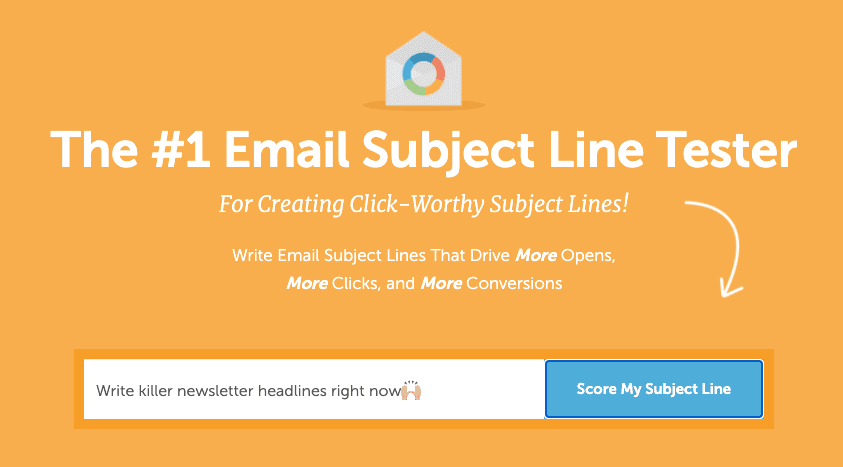 Simply type your subject line into the tester, and you can see what changes you need to make before your newsletter ships.
Since subject lines will often have different character restraints compared to headlines, it is helpful to input your newsletter headline into both of these tools before you send it out.
Simply type your subject line into the tester, and you can see what changes you need to make before your newsletter ships.
Since subject lines will often have different character restraints compared to headlines, it is helpful to input your newsletter headline into both of these tools before you send it out.
Choose a Winner
Next, you need to pick a winner out of the headlines/subject lines that you just wrote. The way I like to do this is to scroll through my list and choose the subject lines that catch my eye, and then narrow it down from there. Pro tip: rather than just picking one subject line to use, set up an A/B test and try out two different styles of subject line for the same email. The data you get from this step will be invaluable as you go forward to write more headlines in the future.Ship Your Newsletter
Once your headline is ready and you have your A/B tests set up (and your newsletter has been edited, designed, and set up within your email system, of course) it’s time to ship. A key for newsletters is to be consistent with how often and when you ship your newsletter. This will create an expectation from your readers who will be waiting for your newsletter when it ships. Keep in mind that once you commit to a schedule, you need to be sure you can be consistent to it.Analyze Your Results
So, you’ve dialed in your content, perfected your headlines, and shipped your newsletter. Now what? Well, now comes the fun part where you get to go back and analyze your results. Well, maybe give it a day or two, compile your open rates and click-through rates, and input the information in the A/B test sheet that you downloaded earlier.Apply What You Learn to Your Next Attempt
Now that you have data showing what worked or didn’t work, you can go into your next attempt with a little more confidence. Email newsletter subject line testing is really just a never-ending cycle of testing to try and optimize your headlines, but the longer you do it, the better your results will be.